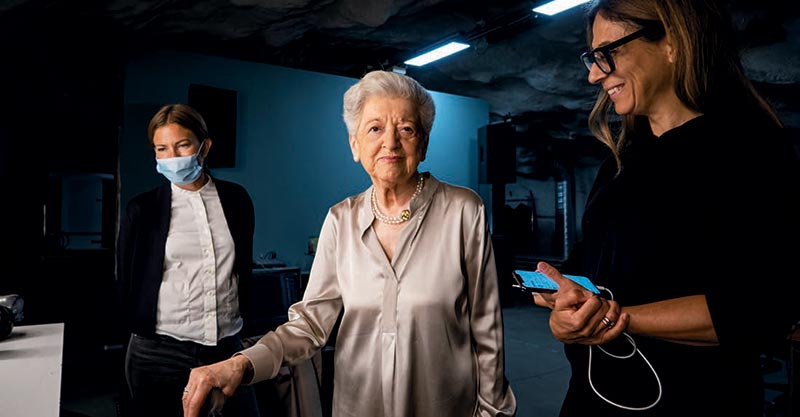
Elisabeth Citrom
Published:
Elisabeth Citrom bears a sense of responsibility in telling her survival testimony: “I have a duty to share my story for the next generations to hear, in the hope they will get something from it.” Born in Romania, she survived the children’s barracks at Auschwitz-Birkenau and was taken on a death march to Lenzing, where she was eventually liberated by Americans in 1945. She then lived in Israel where she served as an officer in the Israel Defense Forces before settling in Sweden to raise a family.
Now, thanks to the support of Elisabeth’s son Joel Citron and his wife Ulrika, Elisabeth’s portrait, as well as her story and those of other survivors who rebuilt their lives in Sweden after the Holocaust, was shown for the first time at The Swedish History Museum in the exhibition
Speaking Memories—The Last Witnesses of the Holocaust. At the exhibit, over 50,000 visitors were given the opportunity to search through the Visual History Archive (VHA) and converse with a survivor through USC Shoah Foundation’s Dimensions in Testimony (DiT) interactive biographies.
The exhibit is currently traveling to other state and regional museums throughout Sweden.
Though her story is painful to tell, Elisabeth agreed to take part in the DiT program by participating in the Institute’s capture of the first two Swedish DiT interviews which were funded by the Citrons and the Swedish government. Though Elisabeth admitted being initially “reluctant to engage with my childhood experience and talk about my feelings,” by the interview’s end Elisabeth was “elated that I was able to express myself ” in Swedish, one of five languages she speaks.
Ulrika and Joel, Vice Chair of the Institute’s Board of Councilors, have pledged to work with the Swedish government to support the creation of The Swedish Holocaust Museum in addition to their support of the recently launched Institute for Holocaust Research in
Sweden, both the nation’s first. Speaking of his mother’s DiT interview, Joel was grateful that she could tell her “personal and unique stories of survival—in a safe environment—that will educate future learners in a new medium for generations to come.”
In addition to Elisabeth’s DiT exhibit, The Swedish Holocaust Museum will feature testimony from the VHA, and together with The Institute for Holocaust Research in Sweden will serve as a resource for academics as well as the public throughout Sweden, which absorbed thousands of Jewish survivors and refugees during and after the war.
Given her son and daughter-in-law’s support of Holocaust education, Elisabeth’s lifelong motto, one that inspired her participation in the DiT, seems especially fitting: “If we do our part, the next generation will do theirs.”